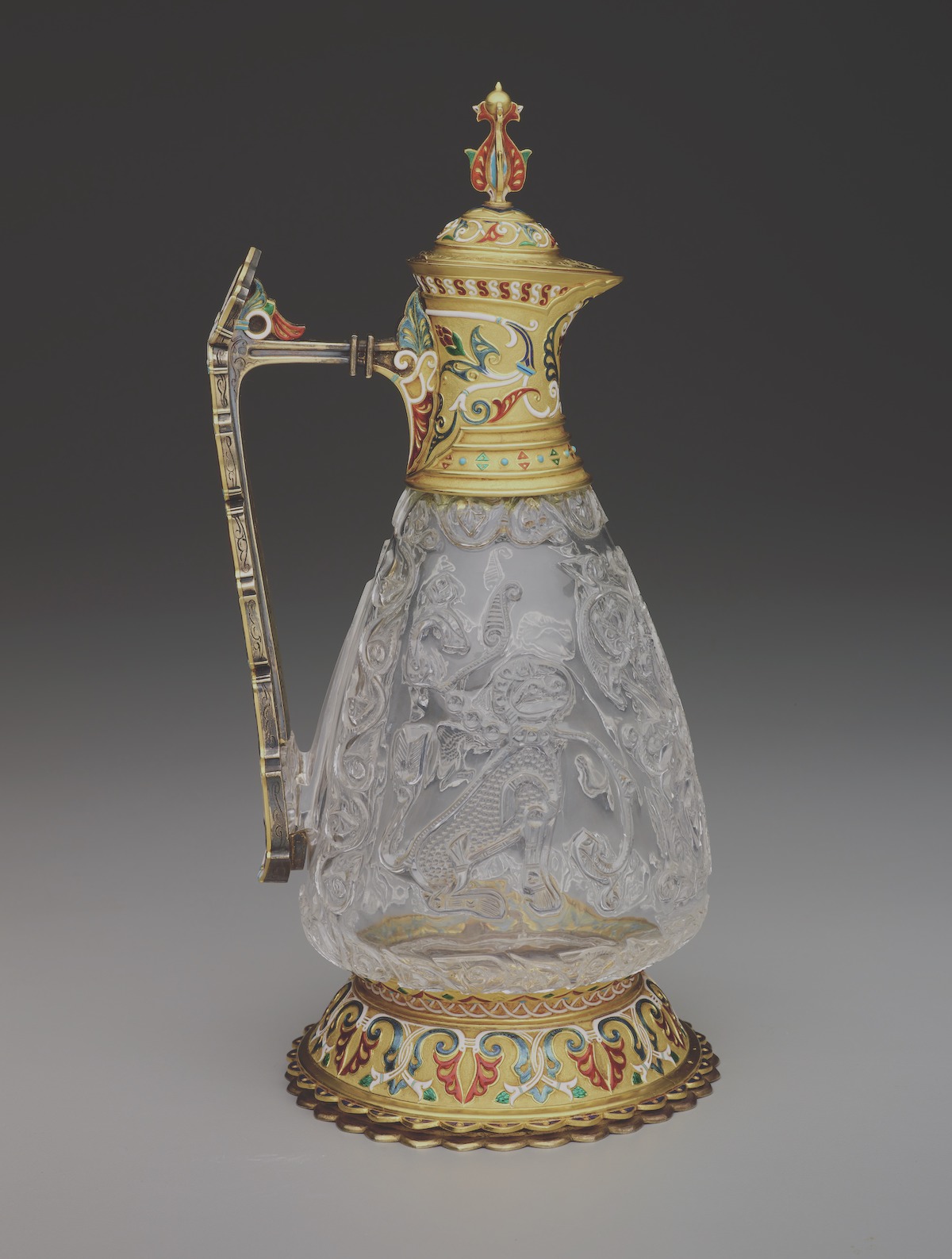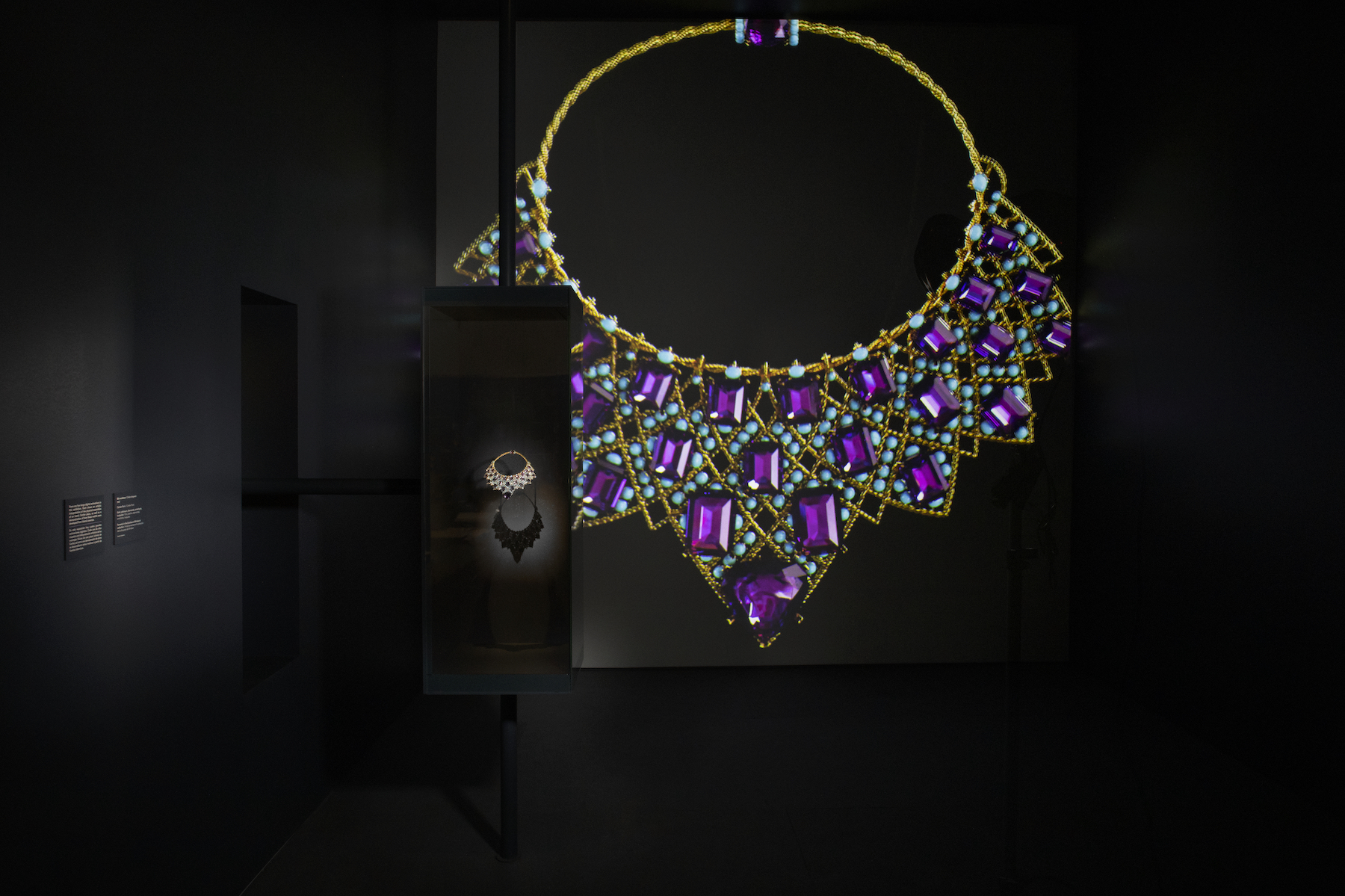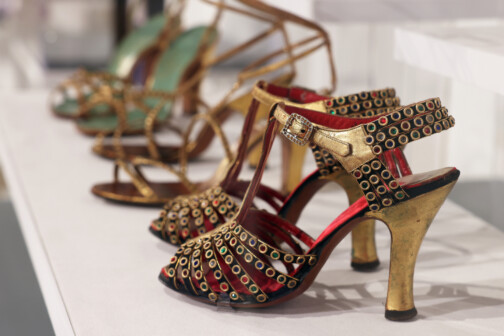Besides a glimmering tiara and a small handful of other pieces there isn’t much jewelry at the start of the Dallas Museum of Art’s masterful “Cartier and Islamic Art: In Search of Modernity” exhibition. They’re a hint of what’s to come in the exhibit that’s been lauded for its bevy of jewels from the luxury French fashion house and Islamic art from across the globe and the personal collection of Louis Cartier, who transformed the brand.
Instead, the exhibit begins at the dawn of the 20th century in France, The Margot B. Perot senior curator of Decorative Arts & Design Sarah Schleuning says. It opens with art from Turkey, Persia, India, and the rest of the Islamic world. Almost all of which had been on display in the exhibition halls of Paris, London, and Munich in the early 1900s.
This front section, says Schleuning, the installation’s co-curator, is to get visitors into the mindset of that time’s cultural zeitgeist. Louis Cartier is taking over his father’s famous Parisian Maison. His brothers Pierre and Jacques are opening London and New York City stores. It’s before colonialism’s fall. “This is what’s happening,” Schleuning says, “artwork from the East as empires are falling is flowing into Paris.” Europeans are growing a deep appreciation for Islamic art’s shapes, scripts, and motifs (but not the meaning—Schleuning likens it to modern-day tattoos). Cartier is expanding its archives and Louis his own art collection, gathering works from across the Islamic world.

The idea of the exhibit, Schleuning says, is to display “what were Louis and the designers seeing, what was coming in, what would they have had access to, because you’re trying to build these connections.”
Because this isn’t a show about the history of Islamic art. It’s about parsing through all that art coming into Europe, and saying, “this is how Louis Cartier saw it,” she explains, and how that art has influenced the Maison for over a century. This preamble might seem excessive for someone coming to the show to just ogle shiny things. However, it’s worth it when the exhibition opens into great halls of well-lit shimmering jewels, and you begin to spot the similarities between the pieces and priceless art displayed beside it.
There are only a few weeks left in the exhibition’s four-month run—the installation ends on September 18. After that, “Cartier and Islamic Art” will leave the U.S. A show like this will never happen again, Schleuning says. “This is an opportunity that is not to be missed.”
After walking through the exhibition with Schleuning, we’ve broken down five reasons you should go see “Cartier and Islamic Art” before it leaves.
A show like this has never been done before.
It’s not a secret that Louis Cartier was an avid collector of Islamic art, Schleuning says, or that his passion influenced his designs. “But no one had up to this point had really pulled that thread—really kind of looked at it in with a singular lens.” That’s where “Cartier and Islamic Art” comes in. After it sets the stage of inspiration from the Islamic art pouring into Europe, you start to see other things happening. You see Cartier’s portfolios of art, with Louis’ notes scribbled into the margins. You see pattern makers and designers sketching out the themes and motifs in the Islamic art, like “s” shapes, finials, repeated triangles, and 10-point-stars. “They’re just trying to understand the patterns,” Schleuning says. Then they twist them and shift them into the jewelry. She likens it to looking into a kaleidoscope.

And you’ll never see a show like this again.
What makes “Cartier and Islamic Art” so spectacular is its four-part collaboration between Musée des Arts Décoratifs, the Louvre, Maison Cartier, and the DMA. “There was incredible synergy,” says Schleuning, who’s been working on the exhibition since March 2018. Schleuning has a more modern decorative arts background, but there were Islamists and other disciplines working together. “There was just this incredible opportunity to explore and think from different lenses.”
The resulting exhibition features more than 400 objects from all four institutions, including Cartier’s vast archives. Some of Louis Cartier’s personal art collection was reunited in this installation—after his death in 1942, many of his pieces were dispersed. The Dallas version of the exhibit features around 33 objects from the Keir Collection, a vast assembly of Islamic art on a 15-year loan to the DMA. Once the exhibition leaves Dallas, it’s not coming back. Says Schleuning, “You will never see this again like this.”
The architecture of exhibit is important, too.
Sometimes the museum uses its in-house team to build out an exhibition, says Schleuning. Sometimes, like with the 2019 Christian Dior show, they bring in an outside designer. Architecture is an art form, Schleuning says. “It’s just continuing to amplify the stories we want to tell in new and interesting ways.” For the current Cartier show, the DMA worked closely with architect Elizabeth Diller of Diller Scofidio + Renfro, which, among other high-profile projects, also designed the spring 2018 “Heavenly Bodies: Fashion and the Catholic Imagination” exhibition at New York City’s Metropolitan Museum of Art.
The Cartier installation is dark, moody, and simple, with spotlights illuminating the jewelry and the refracting sparkles. The displays are almost like they’re floating, with little distracting text (there are QR codes available for those who want to learn more). “You start to make these connections without me writing telling you that,” Schleuning says. The museum wanted a clean, monochromatic palette, she continues, so the jewelry popped and there’d be no distractions. And the modern display only accents the exhibition’s overall theme. “The show is about modernity,” she says, and Maison Cartier’s efforts throughout the 20th century to find a new, modern style.

The technology adds more clarity and understanding to the jewelry.
The DMA also worked with Diller and her team on the exhibition’s over-sized animations. Some Zoom into different works of art from Cartier’s collection. Some into one of the Maison’s famous pieces. It has a peaceful, immersive gallery feel, while blowing up details you might not have otherwise noticed. The goal was to illustrate how “each piece is like an iceberg,” Schleuning says. “And there’s a multiplicity of ideas that are happening.”
They also selected several pieces of jewelry, like an Indian-style upper arm bracelet called a bazuband, to highlight in a series of animations that break down the work into its various components. In front of each screen is a display case of the physical jewelry. The animation starts with the motif’s source art, then builds out the jewelry piece by piece until it’s the image of the precious bracelet or necklace in the glass case. “I love these animations,” Schleuning says. It would be hard to explain how a piece is built out around its motif in text. But this format is “helping expand your knowledge” and train your eye to make those connections.
Everyone will spot something different.
The exhibition is dense with ideas, and every visitor will leave with different takeaways. They might love spotting the patterns. Or they might enjoy looking through the portfolios. “I always hope people walk away with three things, and the desire to come back and see it again,” Schleuning says. The curators put effort into setting up the ideas, or “threads” of the show, but Schleuning knows not everyone is going to catch everything. She’s just hoping people will start to absorb the ideas, and that they inspire them to be curious and to “think about things in a different way.” Of course, she says, it’s more than reasonable to come and just admire the bandeaus, tiaras, brooches, and Tutti Frutti necklaces.
“The show,” she says, “is like a vortex of fabulousness.”
The DMA will host a free admission day September 4 to see “Cartier and Islamic Art.” It’s also offering extended visiting hours to the exhibition (until 7 p.m.) September 10, 11, 17, and 18.
Get the AtHome Newsletter
Author






